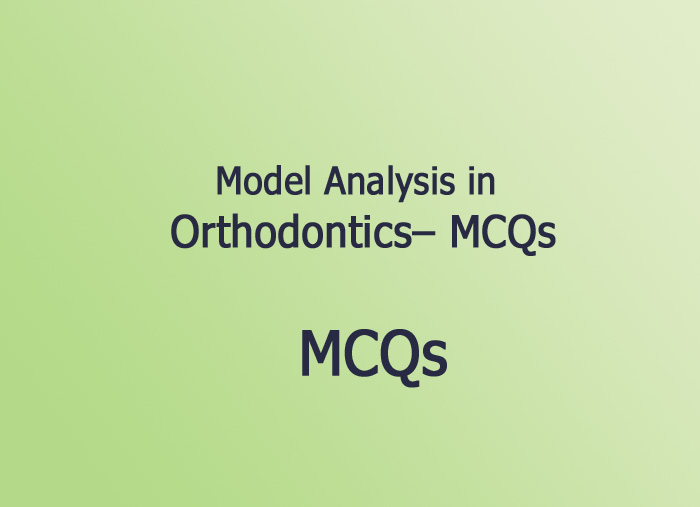- NEED HELP? CALL US NOW
- +919995411505
- [email protected]

1. .The following is one of the mixed dentition analysis;
A. Tanaka johnson
B. Counterpart analysis
C. Bjork analysis
D. Plastercast analysis
Answer A
MIXED DENTITION ANALYSIS
- Moyer’s Mixed dentition analysis
- Tanaka and johnston analysis
- Radiographic method(Huckaba’s mixed dentition analysis)
- Nance mixed dentition analysis
2. Bolton analysis is used to determine;
A. Arch length-tooth size discrepancy
B. Apical base length to arch perimeter
C. Tooth size ratio in maxilla
D. Upper teeth to lower teeth
Answer D
3. Study models are used;
A. As references in orthodontic cases
B. To show shape, size and position of teeth
C. As an aid in treatment planning
D. All of the above
Answer D
4. Ashley-Howe model analysis is used to predict;
A. Tooth material excess
B. Macillo-mandibulat relationships
C. Basal bome transerve relationship
D. Growth prediction
Answer: C
Howe’s considered tooth crowding to be due to deficiency in arch width rather than arch length
5. Arch perimeter can be measured with;
A. Cephalogram
B. Brass wire
C. Varnier calipers
D. Occlusal radiograph
Answer B
6. Mixed dentition analysis was described by
A. Graber
B. Angle
C. Tweed
D. Moyer’s
Answer:D
7. Excess in lower anterior Bolton is an indication for:
- Build up in upper anteriors.
- Stripping in lower molars.
- Stripping in lower premolars.
- Stripping in lower incisors or lower incisor extraction.
Answer:D
8. The number of sites examined to assess the stages of bone maturation in Fishman’s skeletal maturation index are;
A. 4
B. 5
C. 6
D. 7
Answer C
Fishman developed a system of skeletal maturity indicators using four stages of bone maturation found at six anatomical sites on hand and wrist radiographs. The use of cervical vertebrae to determine the skeletal maturity was first suggested by Lamparski.
9. In mixed dentition analysis which tooth is used for classification;
A. Primary first molar
B. Primary second molar
C. Permanent first molar
D. B or C
Answer C
In mixed dentition period only the permanent first molar is completely erupted
10.Four dentists did model analysis by Tanaka and johnston analysis ,Moyer’s ,Stanley and kerber,Wits analysis.Which one will give the best result:
- and johnston analysis
- Moyer’s
- Stanley and kerber
- Wits analysis
Answer:C




